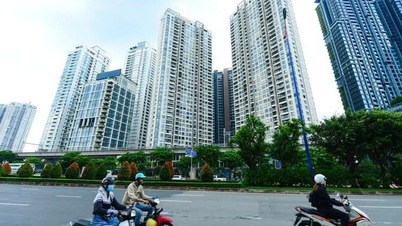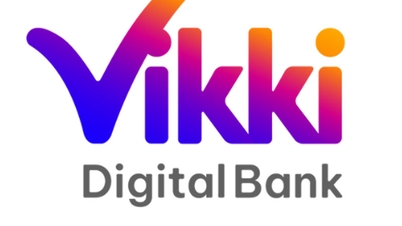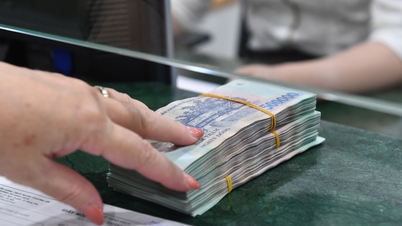3 names with bad debt ratio under 1%
Nguoi Dua Tin compiled statistics from the first quarter 2023 financial reports of 28 banks and found that the total bad debt balance of banks as of March 31, 2023 increased by 25% compared to the end of 2022, to more than 170,000 billion VND.
Among them, the bad debt ratio of most banks increased; only 3 banks had a decrease in bad debt ratio: VietABank (down 0.37%), KienlongBank (down 0.25%) and PG Bank (down 0.1%).
Notably, there are only 4 banks with bad debt ratios below 1% currently: Vietcombank,ACB , Techcombank and Bac A Bank. However, the bad debt ratios of all banks are on an upward trend compared to the beginning of the year.
Accordingly, Bac A Bank is currently the bank with the lowest bad debt ratio in the system at 0.57%, only a slight increase of 0.02% compared to the beginning of the year.
The remaining banks with rates under 1% belong to the "big guys" Vietcombank and Techcombank , both at 0.85%. The remaining bank approaching 1% is ACB with 0.97%.
Banks that recorded low bad debt ratios in the system by the end of the first quarter of 2023, below 2%, include Sacombank (1.19%), VietinBank (1.28%), VietABank (1.43%), TPBank and LienVietPostBank (1.45%), BIDV (1.59%), SeABank (1.6%), KienlongBank (1.64%), MB (1.76%), HDBank (1.85%).
On the contrary, the banks holding the top positions in bad debt after the first quarter of 2023 include VPBank (6.24%), VietBank (4.31%), ABBank (4.03%), BaovietBank (4.69%), VIB (3.64%), VietCapital Bank (2.93%), OCB (3.32%), SHB (2.83%)...
In terms of the increase in bad debt, banks recorded a sharp increase in bad debt in the first quarter of 2023, including TPBank with the strongest increase of 83.96%, MB (up 68.02%), OCB (up 1.4%), VIB (up 46.69%), BIDV (up 40.32%), ABBank (up 35.25%), MSB (up 33.76%), ACB (up 31.47%), Techcombank (up 30.13%).
5 banks with positive growth in bad debt coverage ratio
Rising bad debt means many banks also have to increase their risk provisioning strategies.
Experts predict that credit risk provisioning costs in 2023 will increase and directly affect bank profit prospects.
Accordingly, banks with large lending ratios in the real estate sector, these loans may become bad debts if capital flows into this sector continue to be tightened. However, credit risks will be differentiated among banks, banks with high real estate credit balances will face greater pressure to set aside provisions than purely retail banks.
Also according to statistics from the first quarter 2023 financial reports of 28 banks, the total provision for customer loan risks in the first 3 months of 2023 reached more than 181,000 billion VND, an increase of 7.7% compared to the beginning of the year.
Of which, BIDV was the "champion" in customer loan risk provisions in the first quarter when it increased this target by 10.8% compared to the same period to nearly VND 42,360 billion, but the bad debt coverage ratio decreased from 217% to 171%.
Next are the two "big guys" Vietcombank with 31,894 billion VND, up nearly 29% compared to the same period last year. In contrast, the risk reserve balance at VietinBank decreased by 1% compared to the same period last year, reaching nearly 29,500 billion VND.
The names with the highest risk provision balance in the system include VPBank, MB, SHB, Sacombank, Techcombank, ACB, Lienvietpostbank, HDBank, VIB, all above 3,000 billion VND.
In terms of the increase in this indicator, up to 20 banks increased their provisioning compared to the same period. Of which, Vietcombank and MSB are the banks with customer risk provision balance increasing by over 20%.
Some other banks also had sharp increases in provisions compared to the same period such as OCB (up 19.6%), SHB (up 19.1%), KienlongBank (up 15%),...
On the contrary, 8 banks reduced their credit risk reserve balance compared to last year, including VietinBank, VPBank, MB, Sacombank, ACB, LienVietPostBank, Bac A Bank and PG Bank.
Regarding bad debt coverage ratio, banks with high bad debt coverage ratios above 100% include Vietcombank (321%), BacABank (195%), VietinBank (173%), BIDV (171%), MB (138%), Techcombank (134%), ACB (117%), Lienvietpostbank (111%), SeABank (105%), Sacombank (104%).
However, the bad debt coverage ratio at banks all tended to decrease in the first quarter of 2023, reflecting the high increase in bad debt balance. Accordingly, MB, TPBank, VIB, ACB, Lienvietpostbank are the names that sharply reduced this indicator.
By the end of the first quarter of 2023, only 5 banks recorded positive growth in bad debt coverage ratio, including Vietcombank, SeABank, VietABank, SHB, and PG Bank.
Difficulties from real estate challenge the banking industry
In the first quarter 2023 banking industry update report of VNDirect Securities Company, this agency cited data from the State Bank showing that the bad debt ratio of the whole industry at the end of the first quarter increased to 2.9% compared to 2% at the beginning of the year. Most banks recorded an increase in bad debt ratio and a decrease in bad debt coverage ratio (LLR) compared to the previous quarter.
According to VNDirect, difficulties from the real estate market remain a major challenge for the banking industry's prospects as this sector accounts for 21% of system credit by the end of 2022.
Banks with good buffers and non-real estate focused loan portfolios like Vietcombank, ACB… will limit current risks.
However, experts at this securities company expect the pressure on provisioning as well as bad debt risks of banks, specifically Techcombank, MB, VPBank... to be reduced in the coming time, when the cash flow of real estate businesses can improve somewhat thanks to the issued support policies and some real estate projects have their legal issues resolved.
According to analysis by Vietcombank Securities Company (VCBS), bad debt tends to increase due to the freezing of the real estate market and the financial health of businesses and borrowers tends to weaken in a high interest rate environment, however there will be differentiation between banking groups.
The analysis group believes that banks may record a rapid increase in bad debts this year, with the pressure to set up provisions gradually increasing in the second half of the year.
"The group of banks with risks at present are units with a high proportion of real estate loans and corporate bonds as well as a low bad debt coverage ratio," VCBS's report stated.
Expert Dang Tran Phuc - Chairman of the Board of Directors of Azfin Vietnam forecasts that the bad debt ratio in the entire banking industry will increase by 0.3 - 0.5% compared to 2022.
Mr. Phuc said that the “frozen” real estate market has caused bad debt in banks to increase. Because most of the loans at banks are related to real estate.
In addition, the main collateral of banks is also real estate, but due to the decline in market liquidity, the recovery and settlement of bad debts through liquidation of collateral assets is very slow, and the assets for sale, despite being heavily discounted, still cannot find buyers. This affects the work of debt settlement and bad debts of banks .
Source


![[Photo] Keep your warehouse safe in all situations](https://vphoto.vietnam.vn/thumb/1200x675/vietnam/resource/IMAGE/2025/10/1/3eb4eceafe68497989865e7faa4e4d0e)


![[Photo] President of the Cuban National Assembly visits President Ho Chi Minh's Mausoleum](https://vphoto.vietnam.vn/thumb/1200x675/vietnam/resource/IMAGE/2025/10/1/39f1142310fc4dae9e3de4fcc9ac2ed0)

![[Photo] Hanoi morning of October 1: Prolonged flooding, people wade to work](https://vphoto.vietnam.vn/thumb/1200x675/vietnam/resource/IMAGE/2025/10/1/189be28938e3493fa26b2938efa2059e)
























































































Comment (0)